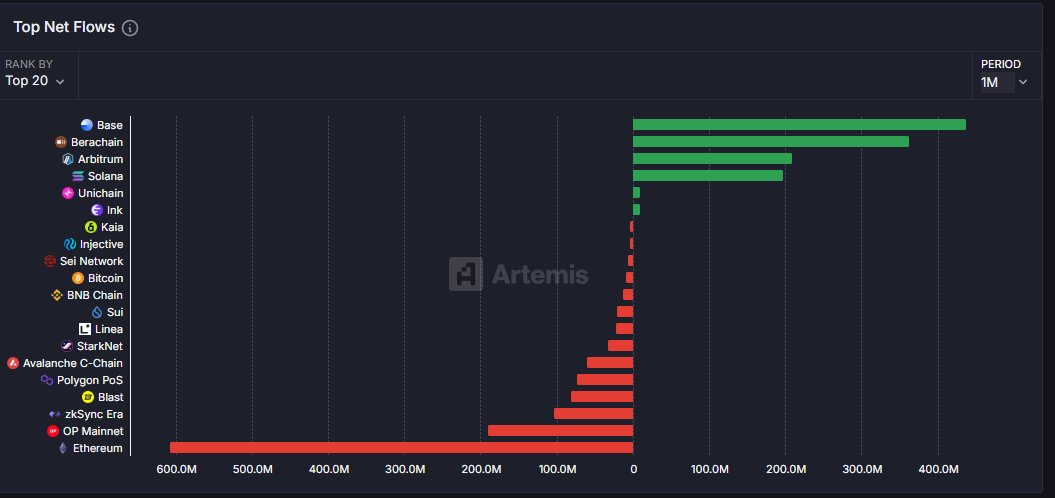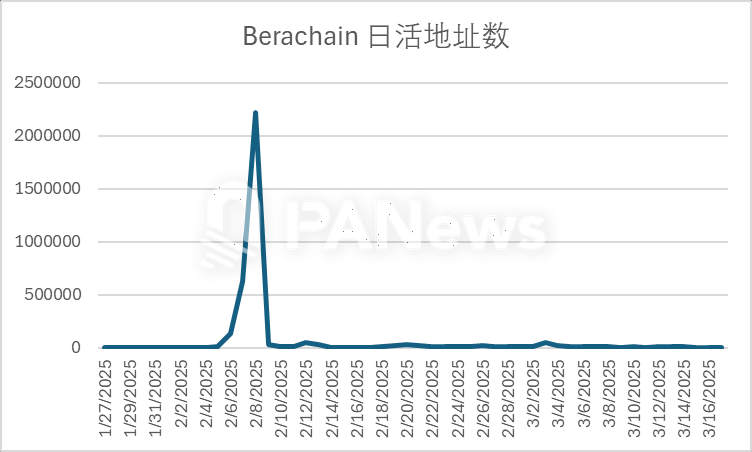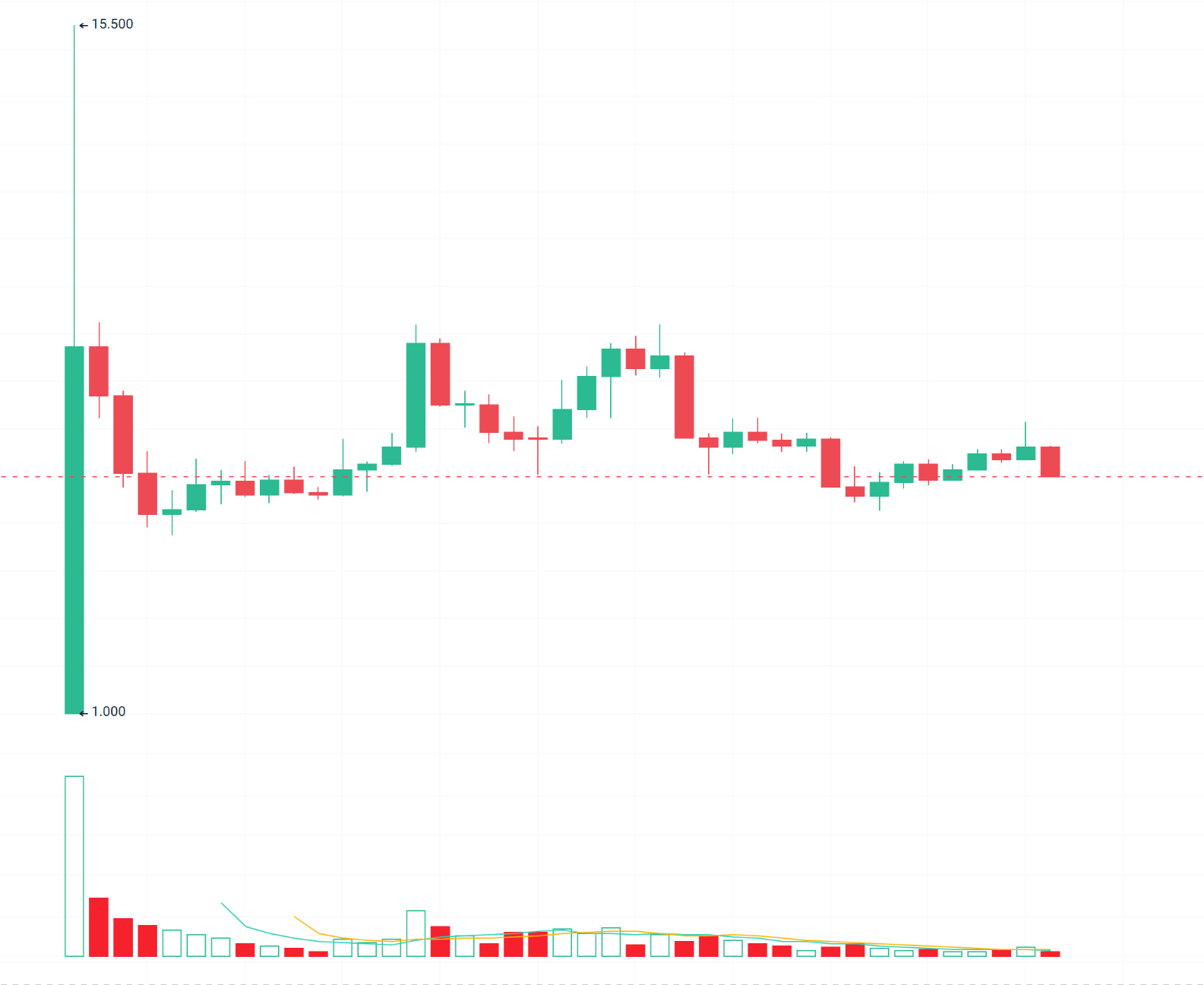Berachain's capital inflow of US$360 million ranked second in the public chain. Can the "liquidity narrative" last?

Reprinted from panewslab
03/19/2025·2MAuthor: Frank, PANews
Against the backdrop of the recent overall sluggish crypto market, Berachain ranked second in the public chain track with a net inflow of US$360 million in the past month, becoming one of the few Layer 1 projects that have grown against the trend. After the main network was launched, its total locked position value (TVL) stabilized at US$2.9 billion, ranking sixth in the entire network, verifying the attractiveness of its Proof of Liquidity (PoL) mechanism to pledged funds.
However, the ecosystem also faces some controversy, with violent fluctuations in the price of token BERA and huge differences in airdrop distribution arousing doubts about fairness, and Lianchuang openly reflecting on the token economic model. After the airdrop ended, Berachain relied on the liquidity narrative of the PoL mechanism to regain community trust and transform from a new force into an Ivy League?
Net capital inflows within the month ranked second, and TVL ranked among
the top six
The capital inflow is Berachain's most impressive data. As of March 18, Berachain's net capital inflow in the past month was about US$360 million, second only to Base. As the market falls and all public chain ecology is in a downturn, it is rare for Berachain's capital inflow to perform like this.
However, after careful analysis, it can be seen that the concentrated inflow of Berachain's funds mainly occurred between February 16 and March 3. During this period, it happened to be the stage when Berachain's main network was launched, the test network was launched and the airdrop collection stage was launched. Therefore, it seems to be expected that a batch of capital inflows will be inflows.

In addition to net capital inflows, Berachain's TVL volume was also in a relatively stable state after the main network was launched, and there was no sharp explosive growth and no significant decline due to market changes. As of March 18, Berachain's TVL volume was about $2.9 billion. Judging from the overall data comparison, Berachain's TVL volume currently ranks sixth among all networks, and only Bitcoin, Ethereum, Solana, BSC and Tron are higher than Berachain's TVL volume. From this perspective, Berachain's PoL (Liquidity Proof Mechanism) consensus mechanism still has certain natural advantages in attracting pledged funds.

Among them, the most funds are pledged in Infrared Finance, which is the main application of the Berachain network liquidity consensus mechanism.
In addition to the good results of the introduction of funds, network activity also tests the actual health index of a new public chain. According to Berachain's official data, the number of daily active users has experienced a big ups and downs. The number of daily active addresses soared to more than 2 million between February 4 and February 10, and then stabilized at around 10,000 addresses after returning to normal. In the past month, the average daily active address number of Berachain has been approximately 13,400. Compared with several other mainstream public chains, this data still has a big gap, but it is relatively stable at present, and subsequent activity still requires a larger time sample to explain the problem.

At the data level, the most eye-catching thing is the performance of tokens. BERA tokens are also the source of the most controversial Berachain has recently.

From the chart, BERA tokens began to fall after it surged to $15.5 after it went online, which performance is also roughly similar to the trend of most large airdrop projects. However, in the subsequent market, BERA showed great volatility. Repeated fluctuations in the range of $5 to $9. It often rises by nearly 90% within a few days, and then falls by 40% and returns to the starting point. However, due to the fact that there are fewer chips in the early stages of the project launch, it is relatively easy to cause severe fluctuations.
From airdrop carnival to trust crisis
The doubts about BERA are mainly focused on doubts about airdrops and token economic models. Previously, PANews had sorted out the airdrop situation of Berachain (related reading: Berachain airdrop "rich and poor": NFT holders earned a maximum of US$55.77 million, and test network users received only US$60 ). In the airdrop distribution, the benefits of NFT holders and ordinary test users are huge, resulting in a huge gap between the rich and the poor.
In addition, although the early VCs did not unlock the tokens, they could use locked tokens to obtain profits to be pledged, which made many users feel unfair. More than 35% of BeraChain's BERA tokens are allocated to private investors, raising concerns about centralization and fairness.

"I don't think the criticism is completely wrong. If we could do it again and the team can start from scratch, we probably wouldn't sell that much supply to VCs," Smokey the Bera, anonymous co-founder of Berachain, told Un Chained.
Additionally, a blogger named Ericonomic discovered that a co-founder of Berachain sold 200,000 tokens he received from the airdrop. The Berachain team did not respond to this.
With the decline in airdrop popularity and the sharp fluctuation of token prices, Berachain's popularity on social media has gradually disappeared recently. What attracted more attention was news about an ecological project safety accident.
On March 15, Berally, a platform for Berachain ecosystem that uses AI agents to conduct social transactions, announced security issues. "Some information of the deployer's key was leaked, resulting in all vesting tokens being sold and taken out of the liquidity pool." Fortunately, Berally's official move was quick and announced a one-day announcement to launch a token compensation plan of up to 120%, claiming that hackers have been locked through centralized exchanges.
The airdrop application is about to end, and liquidity experiment begins
The time for Berachain's airdrop collection will end on March 20, and when the airdrop activity is completely over, whether to rely on Berachain's PoL to continue to attract users or create a new growth curve through the rise of other ecological projects may be the key issue that Berachain needs to face.
In the ecosystem, several key Berachain partners have also made progress recently. Infrared is the application with the most funds deposited on Berachain. On March 4, it welcomed another US$14 million in Series A financing, with a total financing amount of US$18.75 million. From the product perspective, the highest APR of pledged products provided by Infrared has reached 95.45%. Relatively speaking, this yield is indeed more eye-catching.
However, given that this high-yield trading pair is WBERA-HONEY, referring to BERA's big rise and fall, this yield is more important to resist the up and down fluctuations of BERA tokens.
In addition, several ecological partners such as Orderly, XrossRoad, and Moby in the ecosystem have also had some new developments. But from a point of importance, these new developments are indeed not a big progress. The main energy of Berachain official seems to be still focusing on the governance and establishment of the PoL mechanism now. As of March 18, Berachain has 60 validators, and the PoL mechanism has not yet been officially launched.
Judging from the official statements, we seem to be confident about the performance after PoL is launched. However, the former NFT holder received a massive airdrop, and later a VC was not unlocked to be pledged. The trust left by the community to Berachain may face insufficient balance, and the only thing Berachain can do is to prove himself PoL.
In the future, whether the PoL mechanism can be transformed into a real ecological moat and finding a balance between decentralized governance and user value allocation will determine whether it can evolve from a "dark horse" to an "evergreen tree". After the airdrop deadline on March 20, this experiment around liquidity may have really begun. ****

